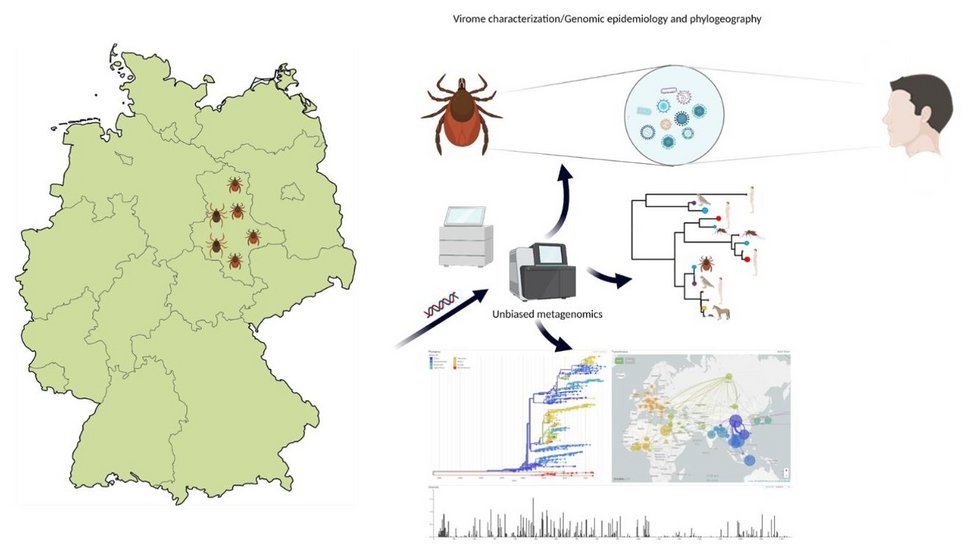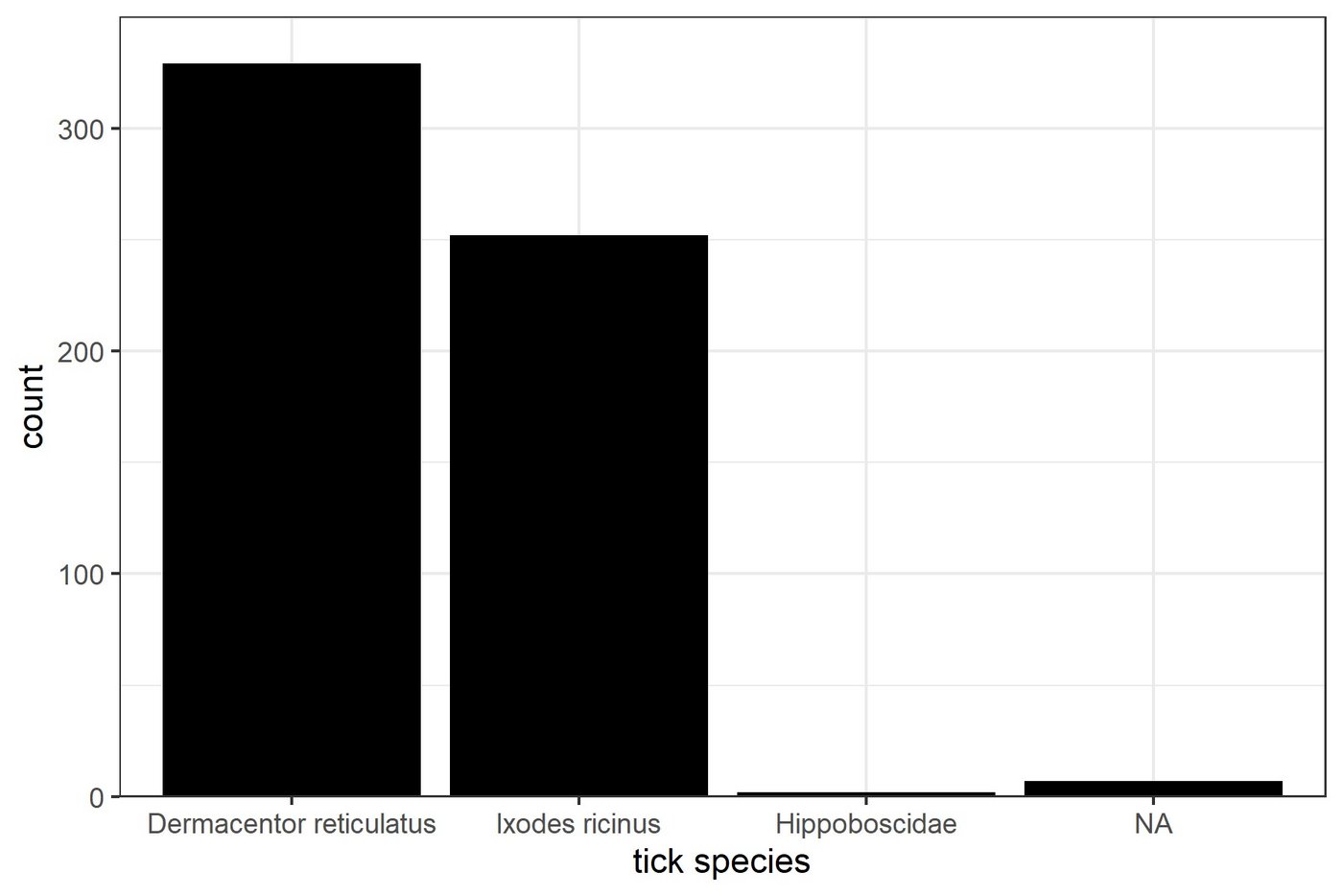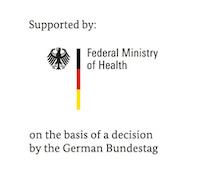How dangerous are ticks in Germany really?
Research project on occurrence, vector competence and pathogen spectrum in Saxony-Anhalt enters second round
Due to global warming and globalisation, both ticks and tick-borne pathogens are spreading in Germany. The cross-institutional research project "E.ZE.SA: Pathogen spectrum of ticks in Saxony-Anhalt" has been collecting and analysing data from tick findings by employees of the state's own forestry operations since 2019. The second project phase will now also investigate whether and which pathogens have been proven to be transmitted by ticks.

Rising temperatures and changes in precipitation, but also global travel and goods traffic, promote the spread of both native and exotic tick species in Germany: In recent years, for example, the common wood tick (Ixodes ricinus), other Ixodes species, alluvial forest ticks (Dermacentor reticulatus) and, for some time now, the Hyalomma tick, which is mainly introduced via migratory birds, have been increasingly detected. In addition to the known TBE viruses (early summer meningoencephalitis viruses) and borrelia, some of these species can transmit other pathogens that cause diseases such as rickettsialpox, tularemia, Q fever, anaplasmosis and babesiosis in humans. How often such pathogens are transmitted has hardly been studied so far.
The research project therefore aims to better assess the risk of exposure and infection in Germany. It also aims to improve the prevention of tick-borne diseases.
The Institute for Medical Mikrobiology and Hospital Hygiene at Magdeburg University Hospital acts as the primary point of contact for the submissions.
"It is really amazing how many ticks we sometimes get from individuals. Due to the excellent cooperation with the forestry companies, the project is a great opportunity," says Prof. Gernot Geginat, Deputy Director of the Institute, who coordinates the collection of the ticks.
In the first phase of the project, the researchers examined ticks that forestry workers in Saxony-Anhalt had voluntarily collected from their bodies. During their work, these employees are exposed to a significantly higher risk of being bitten by ticks and thus also have a correspondingly increased risk of infection. Preliminary result: Between July 2019 and April 2020, mainly two tick species were found, namely alluvial forest ticks and the common wood tick. Rickettsia and previously unknown viruses were detected in the tick samples, but not Borrelia or TBE viruses.


"However, these could also be random or outlier effects," says Prof. Jonas Schmidt-Chanasit, head of the Department of Arbovirology and Entomology at the Bernhard Nocht Institute for Tropical Medicine (BNITM), where the tick species were identified and studied by molecular biology. "In order to record trend curves and regional distribution foci, long-term data over three to five years are required. They help to locate and eliminate these effects."
In the second project phase, the researchers therefore want to examine ticks collected until the end of 2024. They also want to determine which pathogens have been verifiably transmitted to forestry workers by ticks and how often. To this end, they plan to take blood samples from forestry workers, also on a voluntary basis, and to examine them for the corresponding pathogens.
"At the end of the second project phase, we hope to have generated robust scientific evidence that could serve as a foundation for future risk assessments regarding tick-borne zoonoses," says Prof. Antonios Katsounas.
He is the overall project leader at Otto von Guericke University Magdeburg and, after moving to the University Hospital of the Ruhr University Bochum, the sub-project leader here. The University Hospital Magdeburg (UKMD), the BNITM and the Ruhr-Universität-Bochum (RUB) are involved in E.ZE.SA. The Saxony-Anhalt Ministry of Science, Energy, Climate and the Environment is funding the project with almost 146,000 euros over the next two years.
Saxony-Anhalt's Minister of Science, Prof. Dr. Armin Willingmann: "The state's research funding is an important component of our science policy. With the help of this support, bright minds at local universities and colleges can create new knowledge on relevant topics that advances society. This also applies to the project of Magdeburg University Hospital and other partners on the effects of global warming and globalisation on the risk of tick bites and subsequent infections."
Related article:
More cases of illness due to tick bites
News on project phase I "Pathogen spectrum of ticks in Saxony-Anhalt (E.Ze.SA)"
Contact person
Prof. Dr Jonas Schmidt-Chanasit
Head of Arbovirology/ Entomology Department
Phone : +49 171 212 7900, +49 40 285380 271
Email : schmidt-chanasit@bnitm.de
Julia Rauner
Public Relations
Phone : +49 40 285380-264
Email : presse@bnitm.de
Further information







